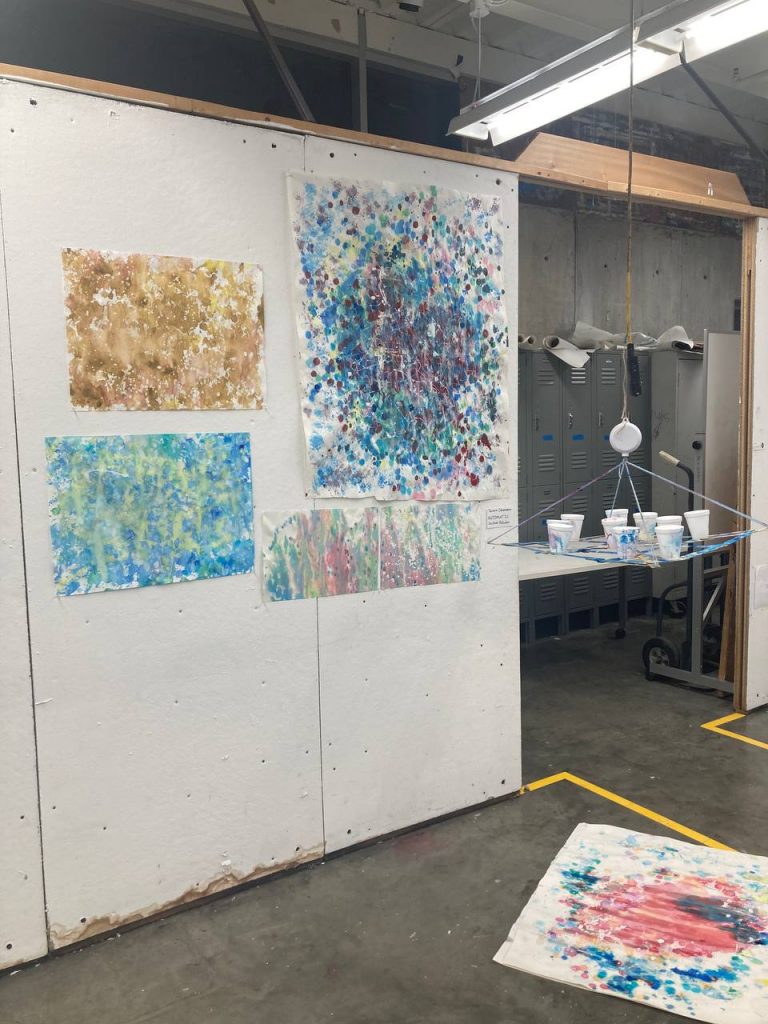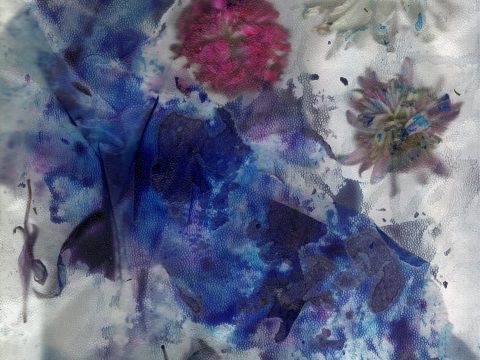Working with color has always been one of my biggest interest, so the second I started thinking about my conference project I knew that that was something I wanted to pursue. Throughout my artistic career, I never really had an artistic or creative freedom. The rules of painting and drawing were strictly dictated to me by my art school and there was no way going around them and without failing the class.
I have always admired how children draw. They don’t care about rules, perspective or proportions. They just create and that is something I wanted to achieve in my artworks as well. The theme of childish creative freedom made me think of another way of using a mobile crib motor in order to create art. However, I couldn’t decide what style I wanted to achieve. Then, after watching numerous artists in the act of painting, I was inspired by Jackson Pollock’s approach to art. Focused on the art work, with a cigarette in his mouth and a bucket of paint in the other, the artist created his art work, and in this way established his reputation in the art world. I wanted to mock his approach to the creation of the artwork.
Thus, using a mobile crib that played lullabies sung around the world with a construction of cups with holes was the perfect way to make fun of the seriousness of Pollock’s art. I made sure that the wooden construction of my machine was secure and well balanced, and I made all the holes in the cups on one side, so that the painted water wouldn’t just poor out right away. The holes were different shapes, sizes, and quantities which allowed me to achieve multiple color effects on the canvas. I experimented with different colors, painting materials, amount of water, and the movement of the mobile which let me create artworks in various styles and sizes.
I really enjoyed working on this project. Something I did not plan to achieve but I unexpectedly did was the pointilliste technique Seurat was famous for, and I really loved working with it. Sometimes the colors mixed together on the paper creating new shades. This was the kind of control I admired giving to my machine: although I could control some movement of the Pollocker, the rotation, the speed with which paint escaped the cups and what happened to it once it hit paper was out of my control.
Overall, I really enjoyed working on this project. It allowed me to become more familiar with Jackson Pollock, but most importantly I finally let myself be “messy” in my art and create whatever I wanted to with a help of a machine. This creative freedom is one of the most significant things I have gained in this class.


